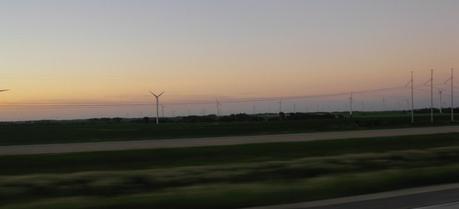 Wind turbines aside I-90 in Minnesota. (Credit: Flickr @ daveynin https://www.flickr.com/photos/daveynin/)
Wind turbines aside I-90 in Minnesota. (Credit: Flickr @ daveynin https://www.flickr.com/photos/daveynin/)This week—at 3 a.m. Sunday—Xcel Energy achieved a milestone when wind power met 46% of customers’ electricity needs in the company’s Upper Midwest service territory.
That’s an all-time high for Xcel, a utility holding company based in Minneapolis, Minnesota, is serving more than 3.3 million electric customers and 1.8 million natural gas customers. It consists of four subsidiaries: Northern States Power-Minnesota, Northern States Power-Wisconsin, Public Service Company of Colorado, and Southwestern Public Service Co. Xcel is the largest producer of wind power in the US according to the American Wind Energy Association.
At the time the company’s Upper Midwest record was set, wind resources provided 1,622 megawatts of the 3,512 megawatts Xcel Energy’s customers were using in Minnesota and neighboring states. The previous record was set in April 2013, when wind generation met 42% of customer demand.
“This record reinforces Xcel Energy’s position as the No. 1 wind energy provider in the nation,” said Dave Sparby, president and CEO of Northern States Power Co.-Minnesota, an Xcel Energy company.
“Wind energy brings great value to our customers as a cost-effective and clean resource. As we’ve added more wind power, we’ve learned a lot about how to reliably and safely integrate wind energy onto our system. And, by using state-of-the-art wind forecasting tools, we have saved Upper Midwest customers more than $15 million in fuel costs since 2009.”
Xcel Energy is currently adding 750 megawatts of wind resources in its Upper Midwest territory. Four wind projects have been approved by Minnesota regulators, representing a 42 percent increase in the company’s wind power capacity in the Upper Midwest. All four projects – two in Minnesota and two in North Dakota – are scheduled to be in service by the end of 2015.
“These cost-competitive projects will save customers more than $225 million and provide a valuable hedge to volatile fuel prices,” Sparby said. “Our diverse mix of cleaner technologies helps us keep costs lower over time, improve our environmental performance and provide safe, reliable service for customers.”

